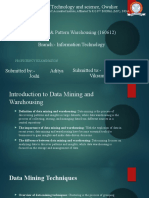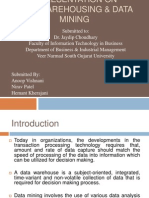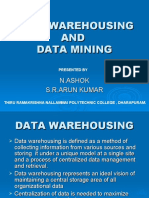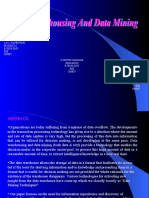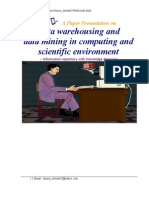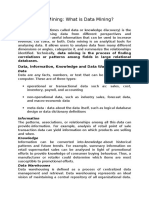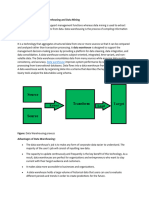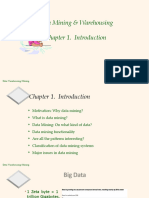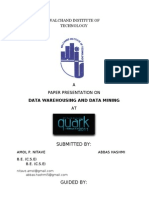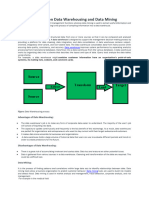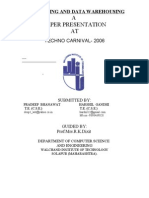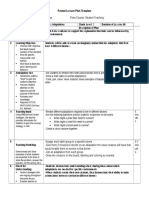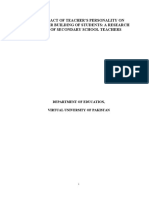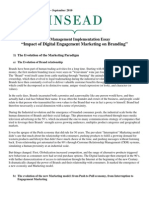0% found this document useful (0 votes)
7 views24 pagesData Mining Data Warehousing and Machine Learning
Data mining and data warehousing are essential for effective information management, providing organizations with a centralized repository for historical data and techniques to extract insights. Data warehousing integrates data from various sources to support decision-making, while data mining uncovers patterns and trends to optimize performance. Both are applied across business, accounting, and legal fields to enhance customer insights, detect fraud, and improve compliance.
Uploaded by
Shiela Mae UgaleCopyright
© © All Rights Reserved
We take content rights seriously. If you suspect this is your content, claim it here.
Available Formats
Download as PPTX, PDF, TXT or read online on Scribd
0% found this document useful (0 votes)
7 views24 pagesData Mining Data Warehousing and Machine Learning
Data mining and data warehousing are essential for effective information management, providing organizations with a centralized repository for historical data and techniques to extract insights. Data warehousing integrates data from various sources to support decision-making, while data mining uncovers patterns and trends to optimize performance. Both are applied across business, accounting, and legal fields to enhance customer insights, detect fraud, and improve compliance.
Uploaded by
Shiela Mae UgaleCopyright
© © All Rights Reserved
We take content rights seriously. If you suspect this is your content, claim it here.
Available Formats
Download as PPTX, PDF, TXT or read online on Scribd
/ 24



